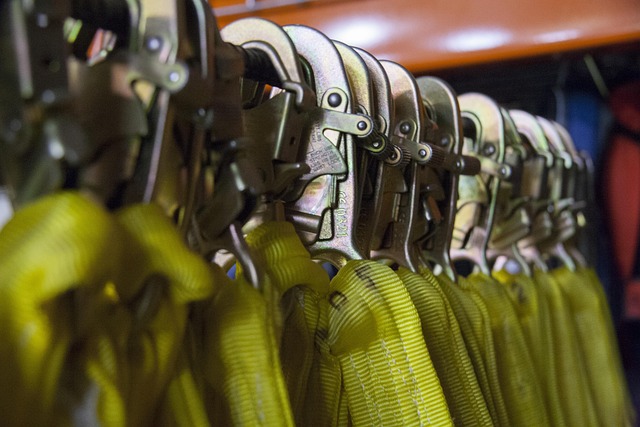Share This Article:

Washington, DC (WorkersCompensation.com) – U.S. Rep. Andy Biggs (R-Ariz.) introduced legislation in Congress that would eliminate the Occupational Safety and Health Administration.
The legislation, Nullify OSHA Act, or NOSHA, would abolish OSHA and instead replace it with state workplace regulations. Biggs, who is running for governor in Arizona, said this bill would put the controls of workplace protections in the hands of the state.
It’s not the first time he or other Republicans have tried to eliminate the agency established in 1970. Biggs first proposed doing away with OSHA in 2021 in response to OSHA enforcement of COVID-19 vaccination measures under President Joe Biden’s administration. OSHA’s policy originally was that employers with at least 100 workers either mandate vaccinations or require unvaccinated workers to wear masks on the job and undergo regular testing. OSHA’s policy was withdrawn after being blocked by the U.S. Supreme Court.
“OSHA’s existence is yet another example of the federal government creating agencies to address issues that are more appropriately handled by state governments and private employers,” Biggs in 2019 when he introduced the NOSHA Act. “Arizona, and every other state, has the constitutional right to establish and implement their own health and safety measures, and is more than capable of doing so. It’s time that we fight back against the bloated federal government and eliminate agencies that never should have been established in the first place.”
That year, Biggs’ bill had nine co-sponsors, but it never made it out of committee. This year’s bill has no sponsors.
But his feelings are supported by employers across the country. Last year, an Ohio contractor asked the Supreme Court to weigh in on a complaint that OSHA’s authority is unconstitutional. In that case, Allstates Refractory LLC that provides furnace services to the glass, metal and petrochemical industries argued that OSHA authority to regulate workplace safety was an overreach of executive power.
In 2019, OSHA cited Allstates for failing to keep other construction processes from going on above or below steel erection. In this case, a column shoe being fitted into place became dislodged and fell hitting an electrical trade employee below it. OSHA’s inspection found that the company was at fault for failing to keep the workspace cleared and fined it $11,934.
Allstates filed suit saying that OSHA’s actions are violations of the constitution and overreach of the powers provided to it by Congress. While district courts upheld OSHA’s powers to investigate incidents and fine companies in violation of the agency’s policies, Allstates asked the Supreme Court to determine if the agency overstepped its regulatory control.
Even though Justices Clarence Thomas and Neil Gorsuch supported hearing the case, it was ultimately turned away. Thomas said evaluating the constitutionality of OSHA’s authority was an “undeniably important” question worth addressing.
For Biggs, in addition to furthering President Donald Trump’s goal of reducing the size and scope of the federal government and stopping “federal meddling” in workplaces, he has concerns about federal regulations in private workplaces.
In a YouTube video, Biggs specifically calls out concerns about OSHA’s “one-size-fits-all” standards for heat protections of outdoor workers in hot weather. Biggs said federal standards unfairly penalize states with warmer climates, like Arizona,
“It makes no sense to set a uniform national standard for heat,” he said in his video.
Without OSHA, workforce experts said, employers may decide not to spend the money to keep staff safe.
David Michaels, former assistant secretary for labor at OSHA between 2009 and 2017, told Time Magazine it would be “a race to the bottom.”
“What would be the impetus to protect workers from (dangerous) exposures?” he said.
Although 22 states already have OSHA approved state standards, it would be a mistake to rely on state-level regulations alone. Current law does not require states to regulate workplace safety. The safest way to maintain workplace protections is to ensure standards at the federal level.
In 2023, there were 5,283 workplace fatalities, and more than 1.5 million injuries and illnesses, statistics from the U.S. Bureau of Labor Statistics reported.
In recent years, OSHA has used its power to fine and inspect companies to bring national discount retailers Family Dollar and Dollar General Stores into check. The discount chains were cited repeatedly for dangerous conditions at their stores – blocking exits, stacking boxes beyond a safe limit, not keeping aisles clear, storing toxic chemicals near food, and blocking access to electrical boxes to name just a few.
OSHA fined Dollar General more than $17 million in proposed penalties before settling with the chain. The company agreed to changes within its store operating policies and a $12 million penalty. The Family Dollar/Dollar Tree chain settled with OSHA in 2023, promising to change company policies and pay a $1.25 million penalty.
AI california case management case management focus claims compensability compliance courts covid do you know the rule emotions exclusive remedy florida FMLA glossary check Healthcare health care hr homeroom insurance insurers iowa leadership medical NCCI new jersey new york ohio osha pennsylvania roadmap Safety state info technology texas violence WDYT west virginia what do you think women's history women's history month workcompcollege workers' comp 101 workers' recovery Workplace Safety Workplace Violence
Read Also
About The Author
About The Author
-
Liz Carey
Liz Carey has worked as a writer, reporter and editor for nearly 25 years. First, as an investigative reporter for Gannett and later as the Vice President of a local Chamber of Commerce, Carey has covered everything from local government to the statehouse to the aerospace industry. Her work as a reporter, as well as her work in the community, have led her to become an advocate for the working poor, as well as the small business owner.
Read More
- Apr 10, 2025
- Frank Ferreri
- Apr 10, 2025
- Frank Ferreri
- Apr 08, 2025
- Anne Llewellyn
- Apr 08, 2025
- Chris Parker
- Apr 07, 2025
- Frank Ferreri




